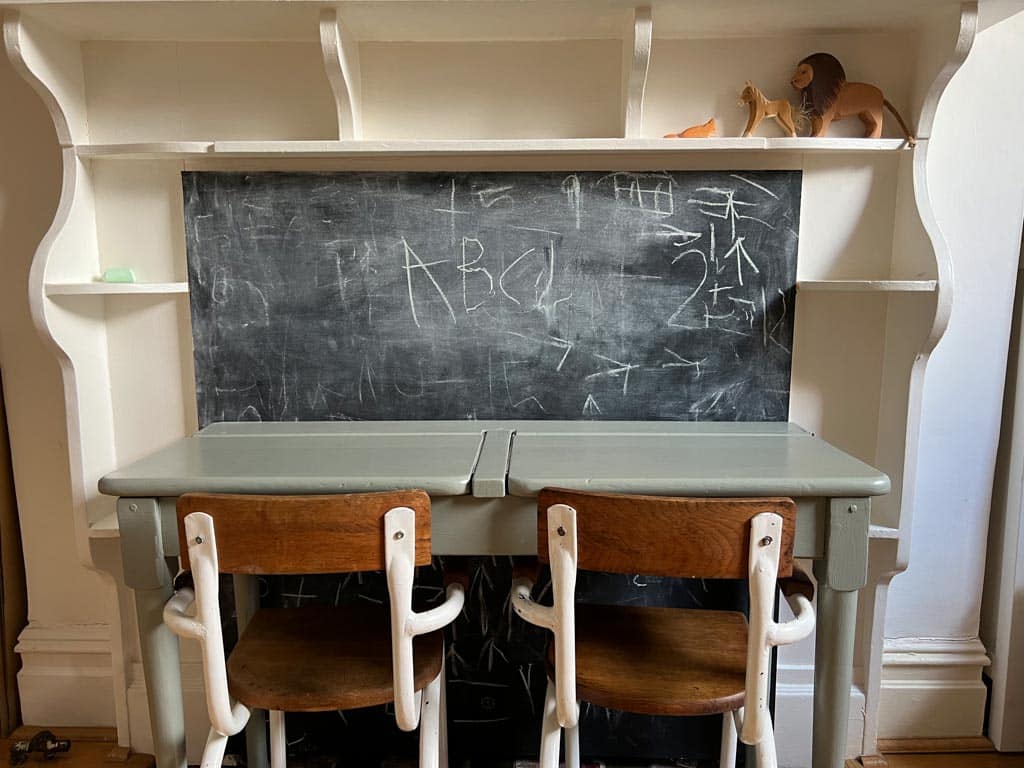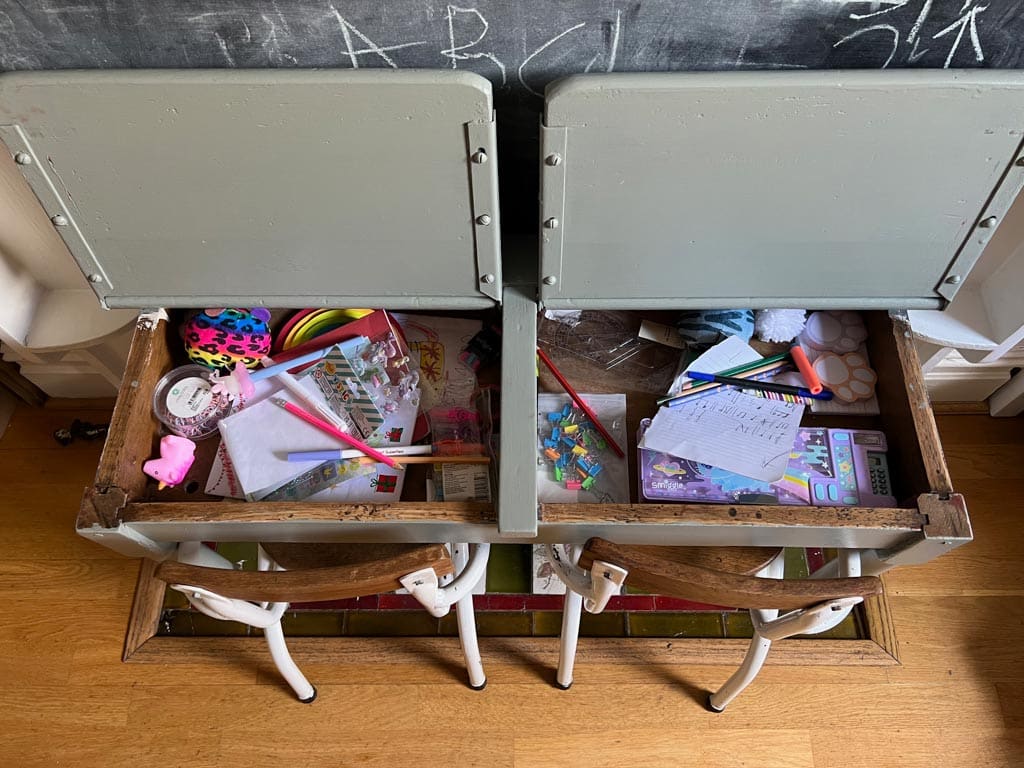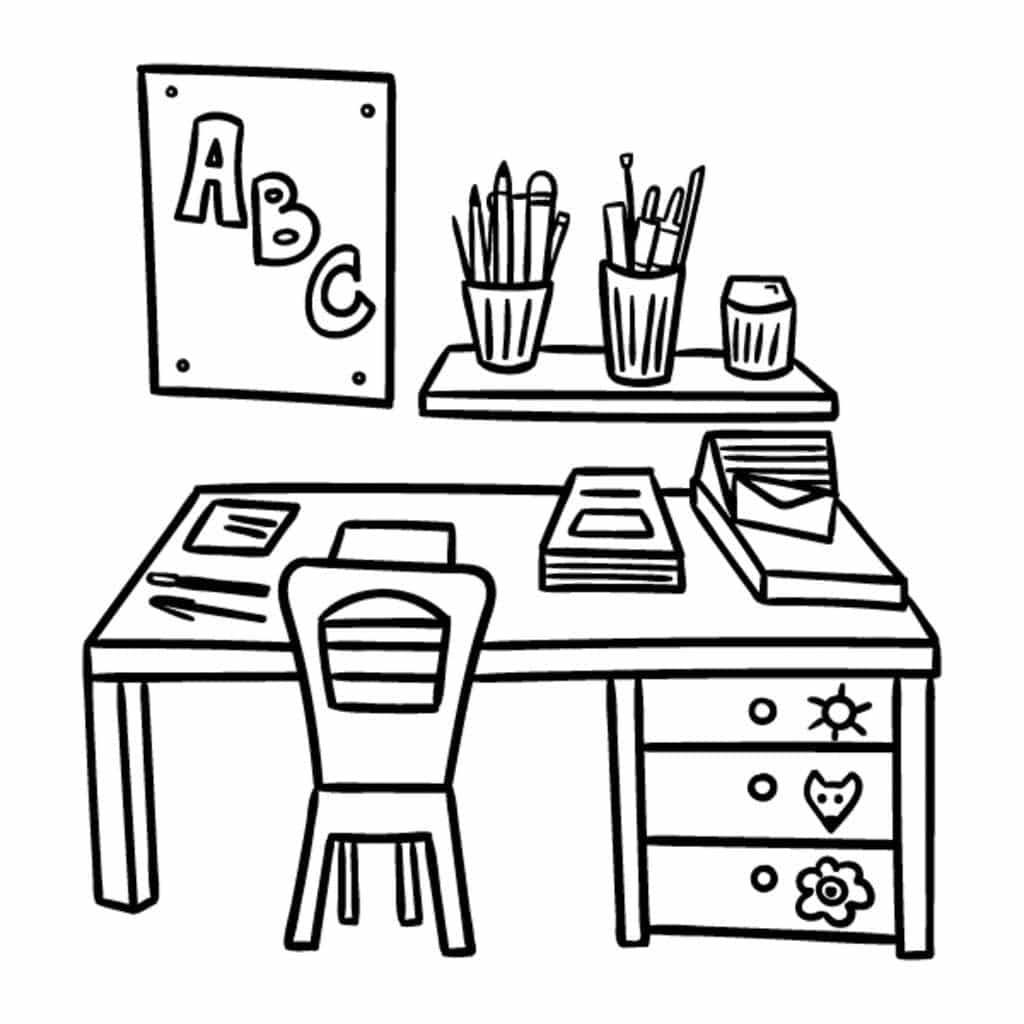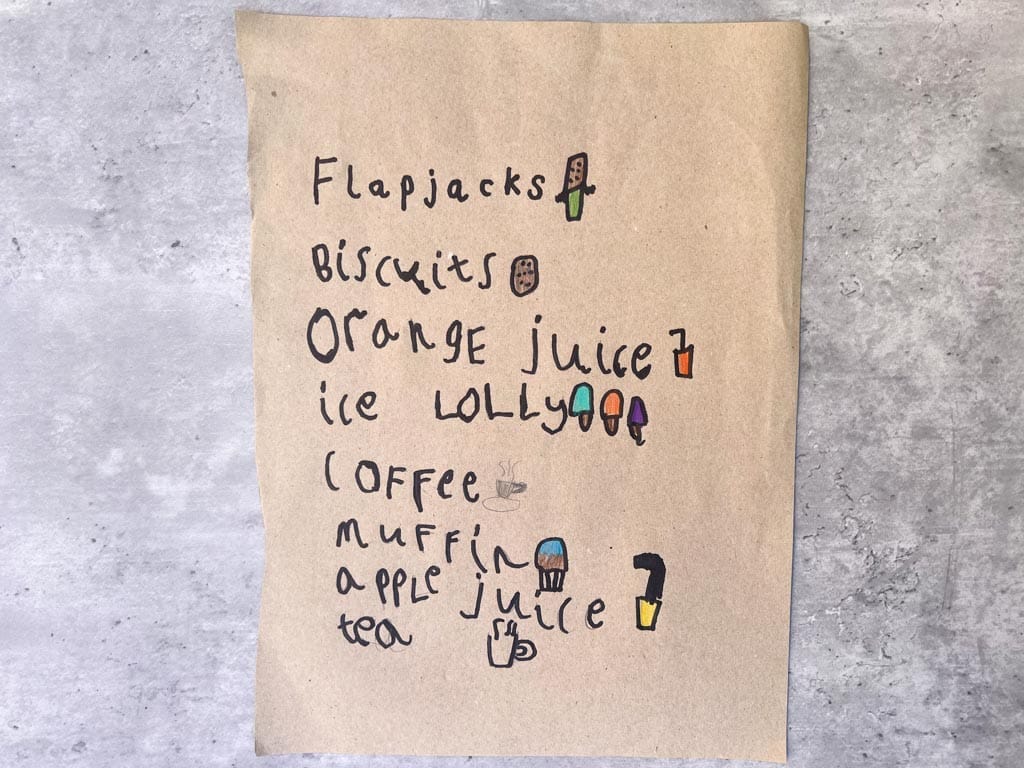Does your child have a corner all to herself where she can go and write?
She may only be a toddler whose mark-making consists of little more than a few horizontal sweeps of a chunky crayon. Or she may be a confident seven-year-old, writing stories and and cards, joining letters with confidence and precision.
It doesn’t matter where she is on her writing journey – a writing corner is one of the simplest and easiest ways to encourage her to do more.
By creating a dedicated writing corner in your home, you can provide your child with a fun and pressure-free environment for mark-making and emergent writing. The key to success lies in designing a space that is inviting, accessible, and filled with opportunities for exploration and experimentation.
How to set up your writing corner
Location is crucial when creating a writing corner for your child. Choose a quiet, well-lit area that is free from distractions (not always easy in a busy house!). This could be in their bedroom, playroom, or even a designated corner of the living room.
Child-sized furniture works best, of course, but don’t worry if everything’s not perfect.

Do as I say, don’t do as I do
This is the 100 Toys writing corner.
It has seen better days.
But it works.
Don’t let a lack of resources stop you from making a start. Create a corner, add some pencils and paper, and get started.
And don’t worry if it’s messy. We bought this old desk at Christmas and the children came down to find it filled with beautiful pens and crisp, new paper. There were all kinds of accessories, too, like rules, sharpeners and stencils. There was washi tape and glue, scissors and paperclips. The children were delighted and started creating straight away.
But all closed systems tend towards entropy. Chaos is inevitable. It is a natural law.
And so, soon enough, the writing corner looked like this:

But, you know what? Good things continued to happen.
The children still sit there every day. They still come up with stories and poems, pictures and patterns. They wrap presents and write cards. They do homework and play games. It has become their space, for things they want to create for themselves. It’s a space for independent writing and I never have to get involved.
And that’s brilliant for all of us.
Choose the right materials
To keep your child engaged and inspired, provide a variety of writing materials and supplies. In addition to crayons, consider stocking the writing corner with markers, coloured pencils, and pens. Different types of paper – such as construction paper, lined paper, and graph paper – will allow your child to experiment with different mark-making techniques and create various types of projects.
Other materials to consider include:
- Stencils and stamps for creating shapes, letters, and numbers
- A mini blackboard or whiteboard for easy erasing and re-writing
- A variety of stickers and decorative elements for embellishing their creations
- Scissors, glue, and tape for assembling collages and other mixed media projects
A print-rich environmenent: include examples of letters and words
Displaying different examples of writing will help your child understand the various ways people communicate through written language. These examples can include handwritten notes, printed materials like newspapers or magazines, and even digital images of street art or graffiti. An alphabet chart is another helpful visual aid that can assist your child in learning letter shapes and sounds.
Creating a list of common words, as well as the names of family members and friends, can help your child practice writing and build their vocabulary. You might also consider displaying a word of the day or week to encourage your child to learn new words and incorporate them into their writing.
Make the writing meaningful
To keep the writing corner fresh and engaging, incorporate practical tasks and playful activities that encourage your child to experiment with writing. Some ideas include:
- Providing old forms and leaflets that need filling out, such as toy catalogues with order forms, old chequebooks, or even grocery lists
- Encouraging your child to write notes to family members, friends, or even the milkman
- Creating bedroom door signs, personalized stationery, or cards for special occasions
- Offering prompts or story starters to inspire creative writing and storytelling
Encourage emergent writing and mark-making
As your child begins to explore the writing corner, be sure to offer encouragement and support for their mark-making and emergent writing efforts. Remember that the focus should be on the process and the joy of creating, rather than perfect handwriting or correct grammar.
Celebrate your child’s accomplishments by displaying their work on a bulletin board or creating a special book or folder for their writing projects. This will not only boost their confidence but also serve as a reminder of their progress and growth.
A writing corner provides a dedicated space for your child to develop their mark-making and emergent writing skills in a fun, pressure-free environment. By incorporating a variety of materials, practical tasks, and examples of writing, you can create a space that nurtures your child’s creativity and encourages a lifelong love for writing.
Collaborate on a writing task
Taking the time to engage with your child in their writing corner is a valuable way to foster their interest in writing. By participating in activities together, you can model writing behaviors, offer guidance, and provide encouragement.
Some collaborative activities you can do with your child include:
- Writing letters or thank-you notes to friends and family members
- Creating a family newsletter, complete with stories, drawings, and photographs
- Playing word games, such as hangman, word searches, or crossword puzzles
- Co-authoring a story or writing a script for a puppet show or play
Encourage independent writing
Giving your child the freedom to choose their writing materials and activities fosters a sense of independence and ownership over their work. Encourage your child to make decisions about what they want to write, how they want to write it, and which materials they prefer to use.
While it is important to offer guidance and support when needed, be mindful of allowing your child the autonomy to explore and experiment with their writing without excessive direction or intervention.
Create a writing routine
Incorporating a writing routine into your child’s daily or weekly schedule will help reinforce the importance of writing and ensure that they have regular opportunities to practice their skills. This routine can be as simple as designating a specific time each day or week for your child to visit their writing corner and engage in a writing activity of their choice.
Final word
Creating a writing corner in your home is an effective way to nurture your preschooler’s mark-making and emergent writing abilities while fostering a love for writing that will last a lifetime. By providing a dedicated space, engaging materials, and ample opportunities for exploration and experimentation, you can help your child develop the skills and confidence needed to succeed as a writer. Remember to be patient, encouraging, and supportive as your child embarks on their writing journey, and always celebrate their efforts and accomplishments.



